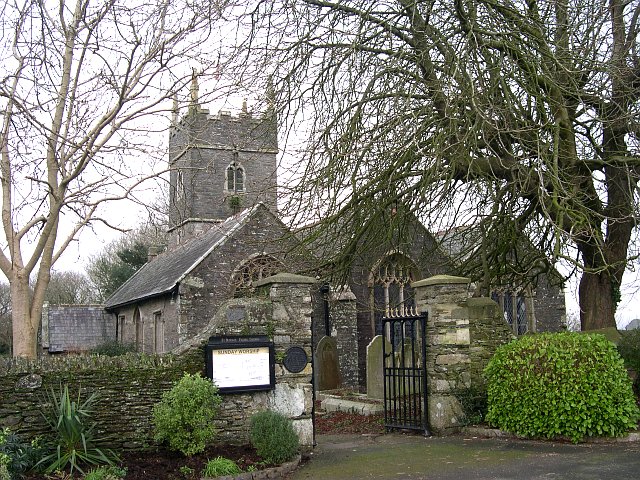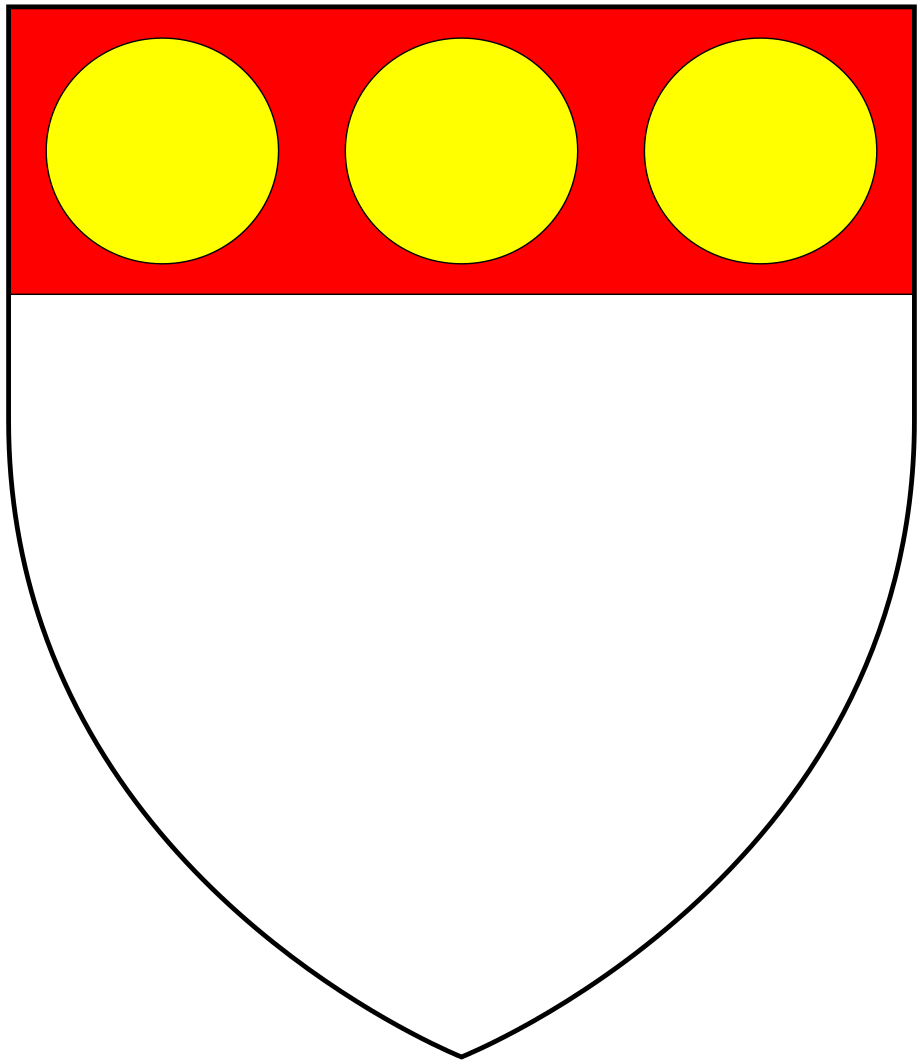|
Budockshed
Budockshed (''alias'' Budshead, Budeokshead, Budokeside etc.) is a historic estate and electoral ward in the parish of St Budeaux, in Plymouth, Devon. History It was for fourteen generations the seat of the de Budockshed family which took its name from the estate. It then passed to the Gorges family of Wraxall, in Somerset, near Bristol, and was sold by Sir Arthur Gorges to the Trevill family, wealthy merchants from Plymouth. The mansion house of the Trevills was demolished in the early 19th century, and only ruins survive, namely of a few outer walls and granite arches. Rogers wrote: "The venerable home of the Budocksheds has been destroyed, but two fine old barns - one of grand proportions - and a picturesque granite gateway, still remain to attest its aforetime importance". A monument to the Gorges family survives in St Budeaux Church. De Budockshed The arms of de Budockshed were: ''Sable, three fusils in fess between three buck's faces argent'', with crest: ''A moor's head ... [...More Info...] [...Related Items...] OR: [Wikipedia] [Google] [Baidu] |
Arthur Gorges
Sir Arthur Gorges (c. 1569 – 10 October 1625) was an English sea captain, poet, translator and courtier from Somerset. Origins He was the son of Sir William Gorges (d.1584) of Charlton, in the parish of Wraxall, Somerset, Wraxall in Somerset, lord of the manor of Wraxall, by his wife Winifred Budockshed, heiress of the manor of Budockshed in the parish of St Budeaux, near Plymouth in Devon. Sir William Gorges was knighted in Ireland in 1579, was Vice Admiral of the Fleet in 1580, and Constable of the Tower, Constable of the Tower of London. He died in December 1584, in the Tower of London. Arthur Gorges' brother Tristram Gorges (c. 1562 – 8 May 1608) was entrusted by Sir Francis Drake with the custody of Don Pedro de Valdez who was captured in the fight with the Spanish Armada in 1588. He took Don Pedro to the Tower of London. The Gorges family in the Elizabethan era included Sir Ferdinando Gorges, founder of the Province of Maine, and Arthur Gorges' uncle, Sir Thomas Gorges ... [...More Info...] [...Related Items...] OR: [Wikipedia] [Google] [Baidu] |
St Budeaux
St Budeaux is an area and wards of the United Kingdom, ward in the north west of Plymouth in the England, English county of Devon. Original settlement The name St Budeaux comes from Budoc, Saint Budoc, the Bishop of Dol (Brittany). Around 480, Budoc is said to have founded a settlement and built a small church. The church eventually gave way to a permanent stone one, dedicated to Saint Budoc, which was erected shortly before the Norman conquest of England. The village is documented in William I of England, William the Conqueror's Domesday Book of 1086. Known as Bucheside, it was valued at 30 shillings (around six times the amount of neighbouring manors). Over the course of the next few hundred years, Bucheside became Bodekishide, Budeokshed, and even Bottockishide and Butshead, the latter form being recorded on the Trevill monuments in the church. The modern name, St Budeaux, is itself a Frenchified "elegant" form. 15th to 18th centuries St Budeaux became a separate parish i ... [...More Info...] [...Related Items...] OR: [Wikipedia] [Google] [Baidu] |
Nikolaus Pevsner
Sir Nikolaus Bernhard Leon Pevsner (30 January 1902 – 18 August 1983) was a German-British art historian and architectural historian best known for his monumental 46-volume series of county-by-county guides, ''The Buildings of England'' (1951–74). Life Nikolaus Pevsner was born in Leipzig, Kingdom of Saxony, Saxony, the son of Anna and her husband Hugo Pevsner, a Russian-Jewish fur merchant. He attended St. Thomas School, Leipzig, and went on to study at several universities, Ludwig Maximilian University of Munich, Munich, Humboldt University of Berlin, Berlin, and Goethe University Frankfurt, Frankfurt am Main, before being awarded a doctorate by Leipzig University, Leipzig in 1924 for a thesis on the Architecture of Leipzig#Leipzig bourgeois town houses and oriel windows of the Baroque era, Baroque architecture of Leipzig. In 1923, he married Carola ("Lola") Kurlbaum, the daughter of distinguished Leipzig lawyer Alfred Kurlbaum. He worked as an assistant keeper at the Ge ... [...More Info...] [...Related Items...] OR: [Wikipedia] [Google] [Baidu] |
Reredos
A reredos ( , , ) is a large altarpiece, a screen, or decoration placed behind the altar in a Church (building), church. It often includes religious images. The term ''reredos'' may also be used for similar structures, if elaborate, in secular architecture, for example very grand carved chimneypieces. It also refers to a simple, low stone wall placed behind a hearth. Description A reredos can be made of stone, wood, metal, ivory, or a combination of materials. The images may be painted, carved, gilded, composed of mosaics, and/or embedded with Niche (architecture), niches for statues. Sometimes a tapestry or another fabric such as silk or velvet is used. Derivation and history of the term ''Reredos'' is Etymology, derived through Middle English from the 14th-century Anglo-Norman ''areredos'', which in turn is from''arere'' 'behind' +''dos'' 'back', from Latin . (Despite its appearance, the first part of the word is not formed by doubling the prefix "re-", but by an archaic spell ... [...More Info...] [...Related Items...] OR: [Wikipedia] [Google] [Baidu] |
Chest Tomb
Funerary art is any work of art forming, or placed in, a repository for the remains of the dead. The term encompasses a wide variety of forms, including cenotaphs ("empty tombs"), tomb-like monuments which do not contain human remains, and communal memorials to the dead, such as war memorials, which may or may not contain remains, and a range of prehistoric megalithic constructs. Funerary art may serve many cultural functions. It can play a role in burial rites, serve as an article for use by the dead in the afterlife, and celebrate the life and accomplishments of the dead, whether as part of kinship-centred practices of ancestor veneration or as a publicly directed dynastic display. It can also function as a reminder of the mortality of humankind, as an expression of cultural values and roles, and help to propitiate the spirits of the dead, maintaining their benevolence and preventing their unwelcome intrusion into the lives of the living. The deposit of objects with an appar ... [...More Info...] [...Related Items...] OR: [Wikipedia] [Google] [Baidu] |
Middlesex
Middlesex (; abbreviation: Middx) is a Historic counties of England, former county in South East England, now mainly within Greater London. Its boundaries largely followed three rivers: the River Thames, Thames in the south, the River Lea, Lea to the east and the River Colne, Hertfordshire, Colne to the west. A line of hills formed its northern boundary with Hertfordshire. The county was the List of counties of England by area in 1831, second smallest of the historic counties of England, after Rutland. The name of the county derives from its origin as a homeland for the Middle Saxons in the early Middle Ages, with the county subsequently part of that territory in the ninth or tenth century. The City of London, formerly part of the county, became a self governing county corporate in the twelfth century; the City was still able to exert influence as the sheriffs of London maintained their jurisdiction in Middlesex, though the county otherwise remained separate. To the east of t ... [...More Info...] [...Related Items...] OR: [Wikipedia] [Google] [Baidu] |
Chelsea, London
Chelsea is an area in West London, England, due south-west of Kilometre zero#Great Britain, Charing Cross by approximately . It lies on the north bank of the River Thames and for postal purposes is part of the SW postcode area, south-western postal area. Chelsea historically formed a manor and parish in the Ossulstone hundred of Middlesex, which became the Metropolitan Borough of Chelsea in 1900. It merged with the Metropolitan Borough of Kensington, forming the Royal Borough of Kensington and Chelsea upon the creation of Greater London in 1965. The exclusivity of Chelsea as a result of its high property prices historically resulted in the coining of the term "Sloane Ranger" in the 1970s to describe some of its residents, and some of those of nearby areas. Chelsea is home to one of the largest communities of Americans living outside the United States, with 6.53% of Chelsea residents having been born in the U.S. History Early history The word ''Chelsea'' (also formerly ' ... [...More Info...] [...Related Items...] OR: [Wikipedia] [Google] [Baidu] |
Warbelton V Gorges
Warbelton v. Gorges was one of the earliest heraldic law cases brought concerning English armory, in 1347. It concerned the coat of arms blazoned '' Lozengy Or and azure'', that is a field of yellow and blue lozenges. The arms were borne by the unrelated families of Warbelton, from Hampshire, and Gorges, from Somerset, apparently without knowledge of each other or their common usage, until John de Warbelton and Theobald de Gorges served together in the English army at the Siege of Calais in 1346/7. A gentleman's armorial bearings represented his very identity and were of enormous importance to him, both as a matter of family pride and for practical purposes of personal recognition in battle and in legal seals. Warbelton made a formal complaint to the officer appointed by the king to resolve such matters, namely Henry of Grosmont, Earl of Lancaster, seneschal of England, who was commanding the English forces. A 6-man court of honour was convened and the pair were cross-exa ... [...More Info...] [...Related Items...] OR: [Wikipedia] [Google] [Baidu] |
Kingston Russell
Kingston Russell is a settlement in the civil parish of Long Bredy and Kingston Russell, in the Dorset district, in the county of Dorset, England, west of Dorchester. In 2001 the parish had a population of 35. The parish bordered Compton Valence, Littlebredy, Long Bredy and Winterbourne Abbas. Kingston Russell shared a parish council with Long Bredy. On 1 April 2024 the parish was abolished and merged with Long Bredy to form "Long Bredy and Kingston Russell". From 1974 to 2019 it was in West Dorset West Dorset was a Non-metropolitan district, local government district in Dorset, England. The district was formed on 1 April 1974 under the Local Government Act 1972, and was a merger of the boroughs of Bridport, Dorchester, Dorset, Dorchester ... district. Features There are 4 listed buildings in the former parish of Kingston Russell. History The name "Kingston" means 'King's stone', it was held by John Russell in 1212. See also * Kingston Russell House * Kingst ... [...More Info...] [...Related Items...] OR: [Wikipedia] [Google] [Baidu] |
Dyrham
Dyrham is a village and parish in South Gloucestershire, England. Location and communications Dyrham is at lat. 51° 29' north, long. 2° 22' west (). It lies at an altitude of 100 metres above sea level. It is near the A46 trunk road, about north of Bath and a little south of the M4 motorway. The Cotswold Way long-distance footpath runs through the village. Administration Dyrham is administered by the civil parish of Dyrham & Hinton and by the unitary authority of South Gloucestershire. The population of this parish was 296 at the 2011 census. Etymology The name of Dyrham is first attested in the ''Anglo-Saxon Chronicle'', which took its present form in the later ninth century, and in tenth-century charters, as ''Deorham''. This name it thought to derive from the Old English words ("wild animal, deer") and ("enclosed land, river meadow"). Thus it probably once meant "deer enclosure". History Dyrham is thought to have been the location of a battle portrayed i ... [...More Info...] [...Related Items...] OR: [Wikipedia] [Google] [Baidu] |





